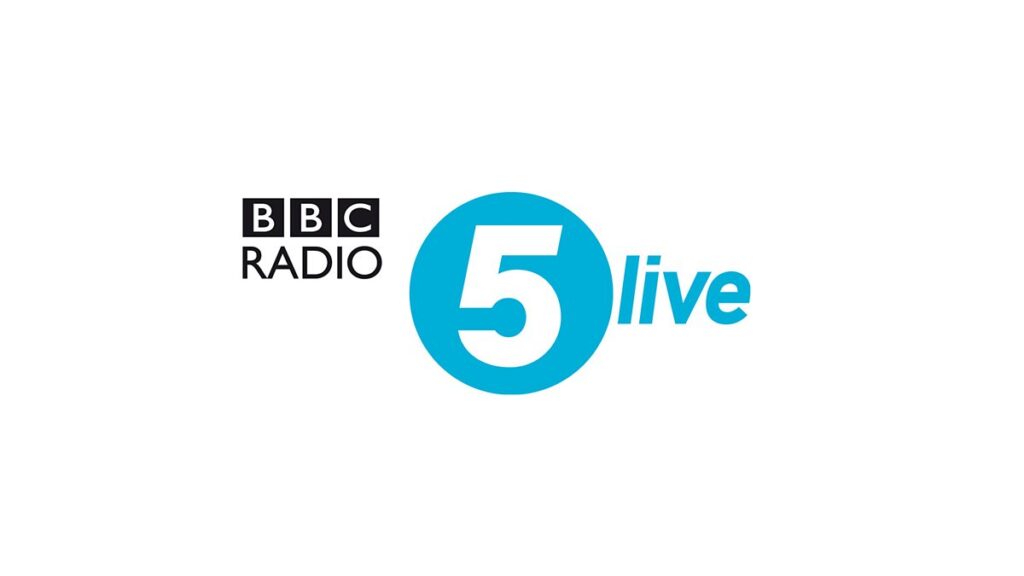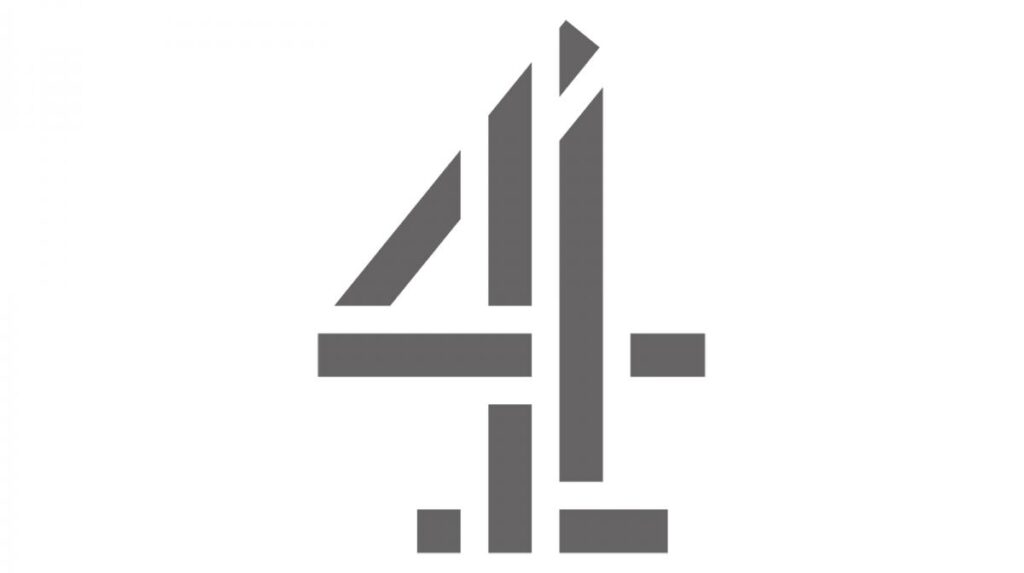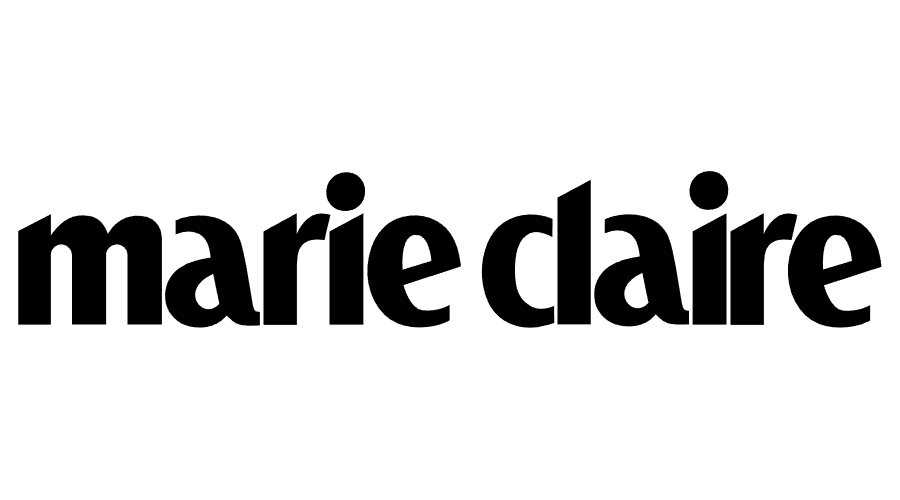What Is A Neck Lift?
A neck lift is an operation designed to rejuvenate the neck and give a more youthful appearance. The face and neck can droop with age as the skin loses its elasticity and the neck appears to lose volume. The muscles in the neck can also become more apparent. A neck lift aims to reposition the volume of the neck and tighten the overlying skin. Modern techniques focus on the repositioning rather than the removal of excess skin. It is often combined with a face-lift but can also be combined with other facial rejuvenation procedures.
Who Is It Suitable For?
Our neck ages for a variety of reasons and ages at different times for different patients. It is commonest to perform neck-lifting procedures between the ages of 50-70 although there is no age limit and younger patients can benefit from the procedure.
Who Is It Not Suitable For?
Those who have been encouraged to improve their contour by others. Those with unrealistic expectations, those who smoke and those with a significant medical history. A neck-lift will not alter the creases around the lips and will not address the aging of the face.
How Much Does A Neck Lift Cost?
This depends on what is required. After a consultation if you are suitable for neck lift surgery you will be given a quote for surgery that will include the surgeons, hospitals and anaesthetic fee.
What To Expect During Your Consultation?
The success of the consultation depends on your openness and honesty in relation to what troubles you and your expectations of surgery. You will be asked questions about your health, desires and lifestyle. Different operations can be tailored to your needs and the potential outcomes and the risks and complications will be discussed with you. The operation involves repositioning of the tissues in your face and often skin is also tightened and removed. Various types of neck lift procedures are available and may be combined with other forms of facial rejuvenation. It may involve lifting all of the skin of the face and neck, repositioning of the tissues and tightening of the skin. It may involve incisions under the chin only or incisions in the neck creases. Other facial rejuvenation procedures may be performed at the same time.
A consultation regarding the risks and limitations of surgery will help you to choose a procedure that will meet with your expectations.
Preparing For Neck Lift Surgery
The majority of neck-lift procedures require general anaesthetic. Your health is a prime importance and any cosmetic surgery should be postponed if you are unwell for any reason. It is important that if anything changes with your health that you make contact with us. You should ideally stop smoking 6 weeks prior to surgery and stop taking aspirin, anti-inflammatory drugs and herbal supplements before surgery. You may need preoperative tests prior to surgery, which we will arrange if required. You will generally experience discomfort following the surgery and should aim to be off work for at least 2 weeks depending on the type of work you do.
The Surgery
A neck lift often takes between 2 and 3 hours although this may be longer if you are having additional procedures. When a neck lift is combined with a face-lift usually an incision is made in the hairline and extends in a natural line in front of the ear (men) or just inside the cartilage at the front of the ear (women) and continues under and then behind the earlobe into the scalp. Shorter scars may be used depending on what you are trying to achieve. It may be necessary to make an incision under the chin or in the neck crease.
The skin is generally separated from the underlying tissues and the tissues of the neck are visualized directly. The underlying fat and muscle are visualized and the tissue repositioned. Occasionally excess fat may need to be removed via liposuction. The muscles in the neck are tightened and the skin is redraped and repositioned. Skin may need to be removed and the skin is then resutured in layers. Within the scalp area a number of surgical clips are used. It is unusual to require drains or dressings
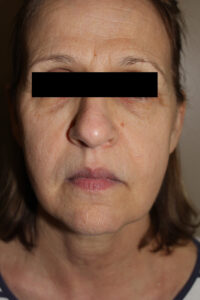
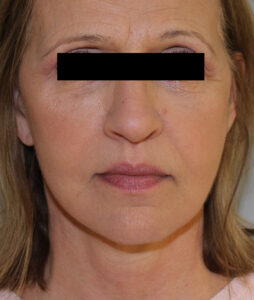
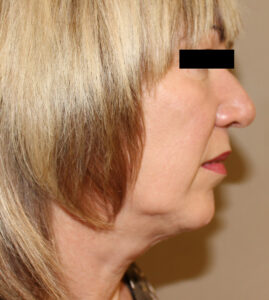
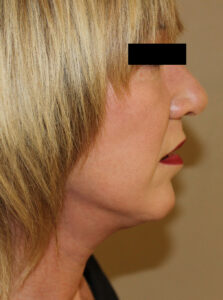
After Surgery
You will usually return to the ward within an hour following surgery. You will be able to eat, drink and mobilize. You will feel swollen and have bruising and discomfort that may require analgesia. You will be numb around the scars and you will feel that your neck in particular tight, which is entirely normal. The bruising and swelling does take some days / weeks to settle and you should keep your head upright. You should arrange for someone to pick you up following surgery and have some support at home on discharge. The final results of a neck lift can take a number of months to become apparent. You will be seen in the dressings clinic the following week and it is important to avoid too much contact with your face and hair during this time. It will take a couple of weeks to get back to your normal activities. The scars can be red initially but usually fade over time and usually fade to become a white line.
Risks And Complications
The vast majority of patients are delighted with the procedure although common complaints include numbness, bruising and swelling. Uncommon complications include infection, haematoma, delayed healing/skin necrosis/skin loss, seroma formation and thickened scar. Abnormal scars are rare although there may be a difference in the scars between the two sides. Nerve damage to the facial nerve that controls the muscles of facial expression can be damaged. Although temporary weakness lasting days/weeks can occur it is rare for they’re to be any permanent loss of function or movement. There are also uncommon risks of general anesthesia such as respiratory / cardiac compromise and deep vein thrombosis.










